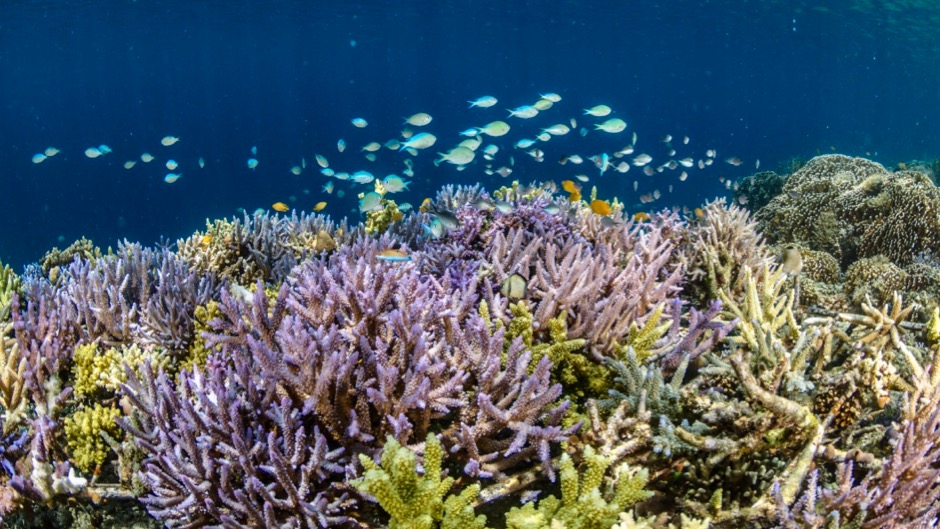MIAMI—The United Nations recently released a new report projecting future coral reef bleaching globally. The lead author of the report, Ruben van Hooidonk, is a scientist with NOAA’s Cooperative Institute of Marine and Atmospheric Studies based at the University of Miami (UM) Rosenstiel School of Marine and Atmospheric Science.
Results highlights from the report include:
• Under the fossil-fuel aggressive SSP5-8.5, annual severe bleaching (ASB) is projected to occur within this century for 100% of the world’s coral reefs. The average projected year of ASB is 2034, nine years earlier than was projected as a global average for RCP8.5 using CMIP5 models. This suggests the previous CMIP5 generation of projections of future bleaching conditions underestimated the near future threat of annual severe bleaching.
• Projected exposure to annual severe bleaching conditions varies greatly among and within countries under SSP5-8.5. Coral reefs with relatively early and late exposure to annual bleaching conditions occur in all of the ocean basins; however, some countries have more temporary refugia than others. Six of the 20 countries with the greatest reef area have >25% temporary refugia (i.e., projected ASB after 2044), including: Indonesia (35%), western Australia (70%), The Bahamas (26%), Madagascar (30%), India (37%), and Malaysia (47%). Thirteen of the 20 countries with the greatest reef area have >25% of reef areas that are projected to experience annual bleaching conditions relatively early. Some of these countries include the Philippines, Solomon Islands, Fuji, Cuba, and Saudi Arabia.
• The average year for the projected timing of ASB under SSP2-4.5 is 2045, 11 years later than the average year projected under SSP5-8.5. Successful mitigation in line with the Paris Agreement would do little to provide reefs with more time to adapt or acclimate prior to severe coral bleaching conditions occurring annually.
• There are three major results from the projections that assume coral adaptation levels between 0.25 and 2C: 1) Each quarter degree of assumed adaptation adds ~7 years to the global average timing of projected annual severe bleaching; 2) The great majority of coral reefs (>80%) are expected to experience ASB this century even if 2C of adaptation is assumed; 3) There is great spatial variation in the benefits to reefs, in terms of later ASB timing, at each assumed adaption level. The extent to which corals will adapt to increasing sea temperatures is unknown, but some level of adaptation is expected. If we assume 1C of adaptation, the global average ASB timing is ~30 years later than if no adaptation is assumed.
van Hooidonk is based at NOAA’s Atlantic Oceanographic and Meteorological Laboratory. To view the full report, visit the UN Environment Programme at https://wedocs.unep.org/handle/20.500.11822/34219

